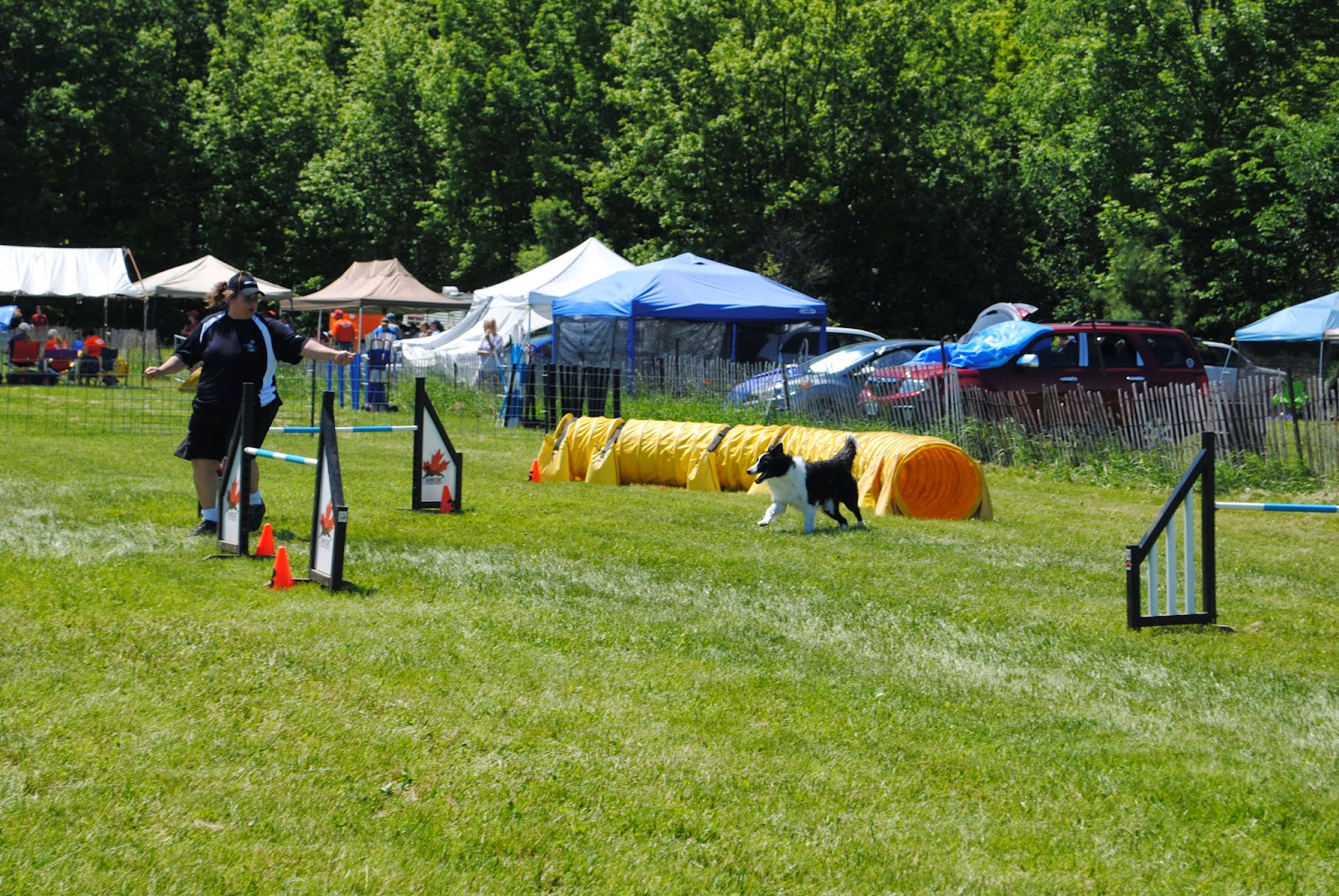Canine Scent Work or Nosework is a fairly new sport
modeled after detection training for professional narcotics or bomb dogs. It offers dog owners an opportunity to allow their dogs
to explore their natural scenting ability in a safe and controlled
environment. The
sport uses the scent of different essential oils that can be easily purchased
and stored by the average person. Dogs
are taught to hunt/search for “target odours” in a variety of settings to
create a mind challenging and extremely fun game for your dog to play. Training usually begins indoors
with box or container searches, and then advances to room searches, outdoor and
vehicle searches.
Scent work is
suited to all types of dogs and owners whether you practice for fun or competition.
Many human and/or canine disabilities
are easily accommodated, as are behaviour issues including dog reactivity. Classes and competitions are run so that each
search is done individually by one dog and handler team working at a time,
allowing dogs with issues to focus and learn.
Working without social stressors allows the dog and handler to be free
to concentrate on the search. As the
sport is relatively “low impact” it is great for young puppies, elderly dogs
and dogs with injuries.
 The sport
encourages dogs to be independent as the owner has to believe in the dog’s
ability to find the target odour. It gives
the dog an outlet to do what comes naturally and just “be a dog”. This helps to promote the dog’s confidence
and builds a trusting relationship between canine and owner. It also provides
intense mental stimulation and many behaviour issues are reduced because the
dog’s desire to search helps develop self-control and focus.
The sport
encourages dogs to be independent as the owner has to believe in the dog’s
ability to find the target odour. It gives
the dog an outlet to do what comes naturally and just “be a dog”. This helps to promote the dog’s confidence
and builds a trusting relationship between canine and owner. It also provides
intense mental stimulation and many behaviour issues are reduced because the
dog’s desire to search helps develop self-control and focus.
This post was written by
Lee Anne Rogers who we are lucky enough to have running our scent work class in January
Lee Anne Rogers has been training and competing in various
dog activities for 15 years. In 2013 she
graduated with honors from the Professional Dog Trainer program at Animal
Behavior College and is currently taking courses from “Ethology Institute
Cambridge”. She actively competes in
Agility and Nosework with her English Springer Spaniel “Drifter”.
Lee Anne is working on completing the requirements to become
certified as a Nosework Instructor through the “National Association of Canine
Scentwork®”. She has attended seminars for Nosework with
Ron Gaunt, Amy Herot and Jill Marie O’Brien and she recently participated in a
5 day K-9 Nosework camp in Pennsylvania where she learned from some of the top
instructors.













